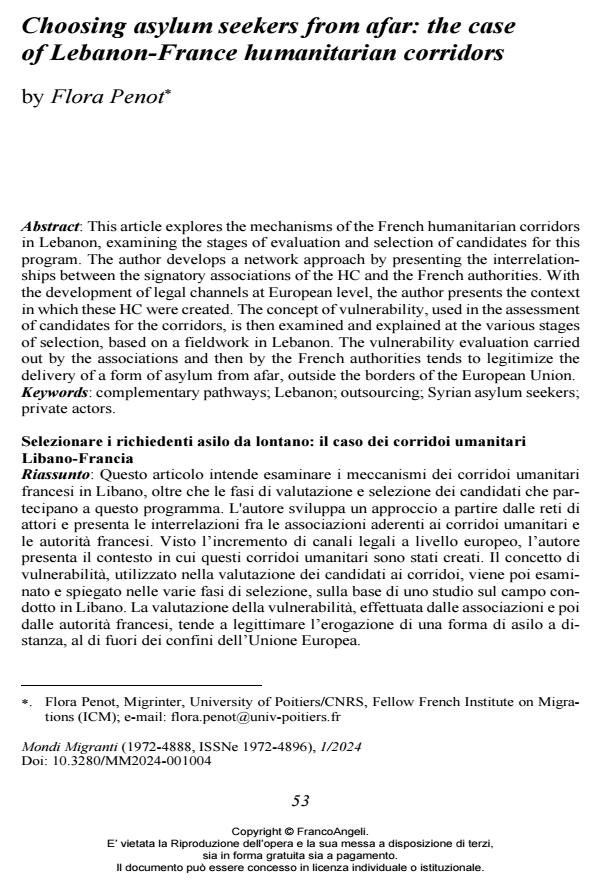Choosing asylum seekers from afar: the case of Lebanon-France humanitarian corridors
Journal title MONDI MIGRANTI
Author/s Flora Penot
Publishing Year 2024 Issue 2024/1
Language English Pages 16 P. 53-68 File size 274 KB
DOI 10.3280/MM2024-001004
DOI is like a bar code for intellectual property: to have more infomation
click here
Below, you can see the article first page
If you want to buy this article in PDF format, you can do it, following the instructions to buy download credits

FrancoAngeli is member of Publishers International Linking Association, Inc (PILA), a not-for-profit association which run the CrossRef service enabling links to and from online scholarly content.
This article explores the mechanisms of the French humanitarian corridors in Lebanon, examining the stages of evaluation and selection of candidates for this program. The author develops a network approach by presenting the interrelation-ships between the signatory associations of the HC and the French authorities. With the development of legal channels at European level, the author presents the context in which these HC were created. The concept of vulnerability, used in the assessment of candidates for the corridors, is then examined and explained at the various stages of selection, based on a fieldwork in Lebanon. The vulnerability evaluation carried out by the associations and then by the French authorities tends to legitimize the delivery of a form of asylum from afar, outside the borders of the European Union.
Keywords: complementary pathways; Lebanon; outsourcing; Syrian asylum seekers; private actors.
Flora Penot, Choosing asylum seekers from afar: the case of Lebanon-France humanitarian corridors in "MONDI MIGRANTI" 1/2024, pp 53-68, DOI: 10.3280/MM2024-001004